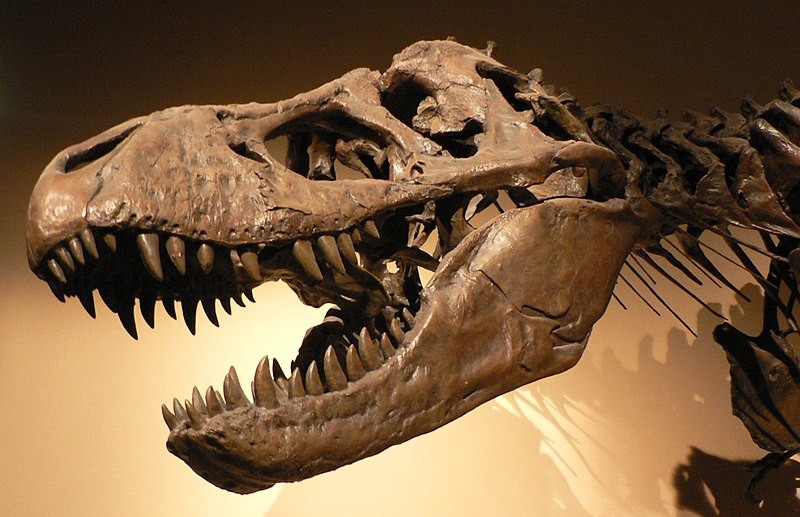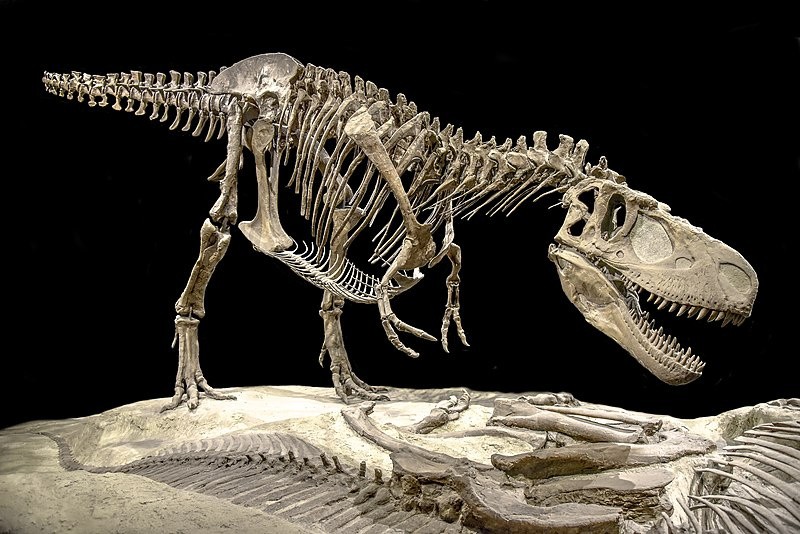Tyrannosaurus rex, a formidable predatory dinosaur that roamed western North America more than 66 million years ago, was known as the "tyrant lizard king." But how big was the royal family of this monarch? Could the modern-day T. rex be made up of several species?

In recent research published in the journal Evolutionary Biology, three paleontologists suggest that the fossils attributed to T. rex cluster into three distinct body forms, which they claim represent three unique species. The researchers suggest two additional species names and T. rex: T. regina and T. imperator, derived from the Latin words "queen" and "emperor," respectively.
"For Tyrannosaurus, all the fossils from North America have been lumped into the same T. rex species," explains study leader Gregory Paul, a paleoartist and independent researcher who produced The Princeton Field Guide to Dinosaurs.
If their findings are confirmed, Paul and his co-authors believe it would improve our understanding of dinosaur evolution throughout the Cretaceous period, which spanned from 145 million to 66 million years ago. Scott Persons, a paleontologist at the College of Charleston in South Carolina, says, "We're interested in the idea of attempting to discern extremely fine level species-to-species development."
Related Article : Well-Preserved Skin Fossil of a Carnivorous Dinosaur May Open New Doors in the Study of Prehistoric Animals
Confirming the Findings
If the findings are confirmed, some of the most well-known Tyrannosaurus specimens on display in museums throughout the globe will be reclassified.
However, paleontologists who weren't involved in the new study, including some of the world's foremost T.rex specialists, are suspicious about the findings. "It's simply shades of gray and cloud shapes-no, there's validity here at all," says Thomas Carr, a paleontologist at Carthage College in Kenosha, Wisconsin, who specializes in tyrannosaurs.
According to Paul's research, the bones of Tyrannosaurus differ more than the bones of other big carnivorous dinosaurs. The researchers also claim that the bones belong to three separate groups, based on the stoutness of their skeletons and the presence of specific chisel-like teeth, which have long been known to differ among Tyrannosaurus skeletons. "Partly to compel people to address the issue, I wanted to have [the new species] identified," Paul explains.
Tyrannosaurus Variants

The problem is that variations in Tyrannosaurus fossils might have resulted from various circumstances that would not necessitate the creation of new species designations. The proportions of dinosaurs may have varied considerably as they grew older. Individual Tyrannosaurus developed at varied rates, same to how humans grow to various heights. T . rex may have evolved mixed builds based on the food available to them or the habitats in which they thrived.
According to independent experts, the study did not go as far as it might have in vetting these scenarios or weighing their aggregate impact.
"Most of us would guess that there should be numerous species of Tyrannosaurus rex... The important question is, does this research do a thorough job of proving it? I would argue that the research is rather compelling," says Lindsay Zanno, a paleontologist at the North Carolina Museum of Natural Sciences in Raleigh.
Decade-Long Debate
For decades, paleontologists have debated the possibility of several Tyrannosaurus species. For almost a million years, the predator roamed a vast region of ancient North America, from western Canada to New Mexico. That's a big region, and it's been a long time-long enough for populations to split apart and produce new species. (Learn why paleontologists believe there were billions of T. rex roaming the Earth.)
If the anatomical characteristics of a creature's fossils vary with time, the creature may require numerous species designations to distinguish earlier from later versions. Paleontologists have gotten a clearer grasp of how such "chronospecies" may succeed one another in recent decades.
For more prehistoric news, don't forget to follow Nature World News!
© 2025 NatureWorldNews.com All rights reserved. Do not reproduce without permission.





